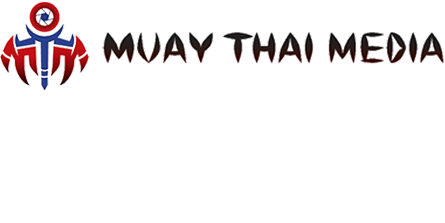Muay Thai or Thai Boxing is the national sport and cultural martial art of Thailand. It was developed several hundreds of years ago as a form of close-combat by the military. Traditional Muay Thai Martial Arts has a long history in Thailand as a fighting style used by the military. The military style of Muay Thai is called Lerdrit, where the entire body was used as a weapon, much like weapons of war. The hands become the sword and dagger; the shins and forearms were hardened in training to act as armour against blows, and the elbow to fell opponents like a heavy mace or hammer; the legs and knees became the axe and staff. The body operated as one unit. The knees and elbows constantly searching and testing for an opening while grappling and trying to spin an enemy to the ground for the kill.
Today's 'Sport Muay Thai' slightly varies from the original art and uses kicks and punches in a ring and with gloves similar to those used in western boxing. Muay Thai Martial Arts is referred to as "The Science of Eight Limbs", as the hands, elbows, knees and shins are all used extensively in this art. A master practitioner of Muay Thai Martial Arts thus has the ability to execute strikes using eight 'points of contact', as opposed to 'two points' (fists) in boxing and 'four points' (fists, feet) used in the primarily sport-oriented forms of martial arts. Muay Thai Martial Arts is an especially versatile, brutal and straightforward fighting style.
Muay Thai is the Thai name for this form of martial art which is also practiced in several South East Asian countries including Cambodia (where it is called Pradal Serey), Myanmar, Vietnam (where it is known as Vo Tu Do), and Malaysia (where it is known as Tomoi).
Pre-fight rituals
Before even entering the ring, most fighters do some rituals. Some might kneel before the ring, some might pray with their coach or by themselves, some do a procedure of movements (like touching the ring ropes 3 times) before going over the top of the top rope. Thai boxers always climb above the top rope, because in Thai society your head is considered to be very important. The feet are considered dirty and therefore it's important to always have your head above your feet while entering the ring. After the fighter enters the ring, they will "Seal the ring" by touching top rope of the ring, walking around the ring counter-clockwise and bowing to each corner, Wai Khru (bowing to their trainer and paying respect to the teacher), and then the fighter will go to the center of the ring and do the Ram Muay which looks like a dance . The Ram Muay is done both for religious reasons and to stretch and warm up. It also gives the fighter some lone time to collect their thoughts and concentrate on the task ahead. Some use this ritual to attempt to scare their opponents, commonly by stomping around the opponent. During the Wai Kru there are a lot of different kinds of movement and steps that a fighter can perform before the match. Some motions imitate, for example, a swallow, a hunter, a soldier or an executioner. After this dance, the fighter walks over to his coach who removes the Mongkol (head piece or crown) and the Pong Malai (Floral wreaths that are given to a fighter before a fight by friends or fans).
Then the match can start after some rules from the judge and a glove shake.
The basic rules:
A Muay Thai Martial Arts match formally has no more than 5 rounds, each round lasting 3 minutes, with a two-minute rest period in between. No additional rounds are allowed.
Boxers must regularly wear gloves, each weighing not less than 6 ounces (172 grams). The gloves must not be squeezed, kneaded or crushed to change its original shape. Rules on a contestant's boxing costumes are:
Contestants must wear only trunks (red or blue according to their corners) that appropriately fit their bodies
Contestants must wear standard supporters or sturdy athletic cups to protect their groin.
No shirts or shoes, ankle caps are permitted
A sacred cord known as Mongkol can be worn around the head only during the pre-fight ritual of paying homage to ancestral teachers of Muay Thai Martial Arts
Metal or other substances that will be harmful to the opponent is prohibited
Techniques
The basic offensive techniques in Muay Thai Martial Arts use fists, elbows, shins, feet, and knees to strike the opponent. To bind the opponent for both offensive and defensive purposes, small amounts of stand-up grappling are used: the clinch. Muay Thai Martial Arts is often a fighting art of attrition, where opponents exchange blows with one another. This is certainly the case with traditional stylists in Thailand, but is a less popular form of fighting in the contemporary world fighting circuit.
When Muay Thai fighters compete against fighters of other styles (and if the rules permit it), they almost invariably emphasize elbow (sok) and knee (kao) techniques to gain a distinct advantage in fighting. Almost all techniques in Muay Thai Martial Arts use the entire body movement, rotating the hip with each kick, punch and block. The rotation of the hips in Muay Thai techniques and intensive focus on 'core muscles' (abdominal and surrounding muscles) is very distinctive and is what sets Muay Thai Martial Arts apart from other styles of martial arts.
Props: superprosamui.com
Props: tigermuaythai.com
About Muay Thai
10:46 PM
TC





